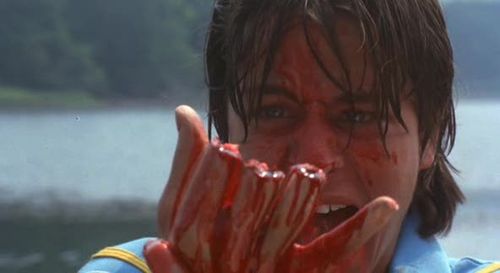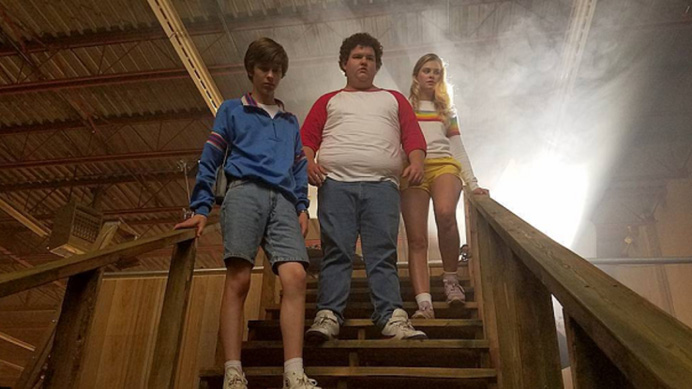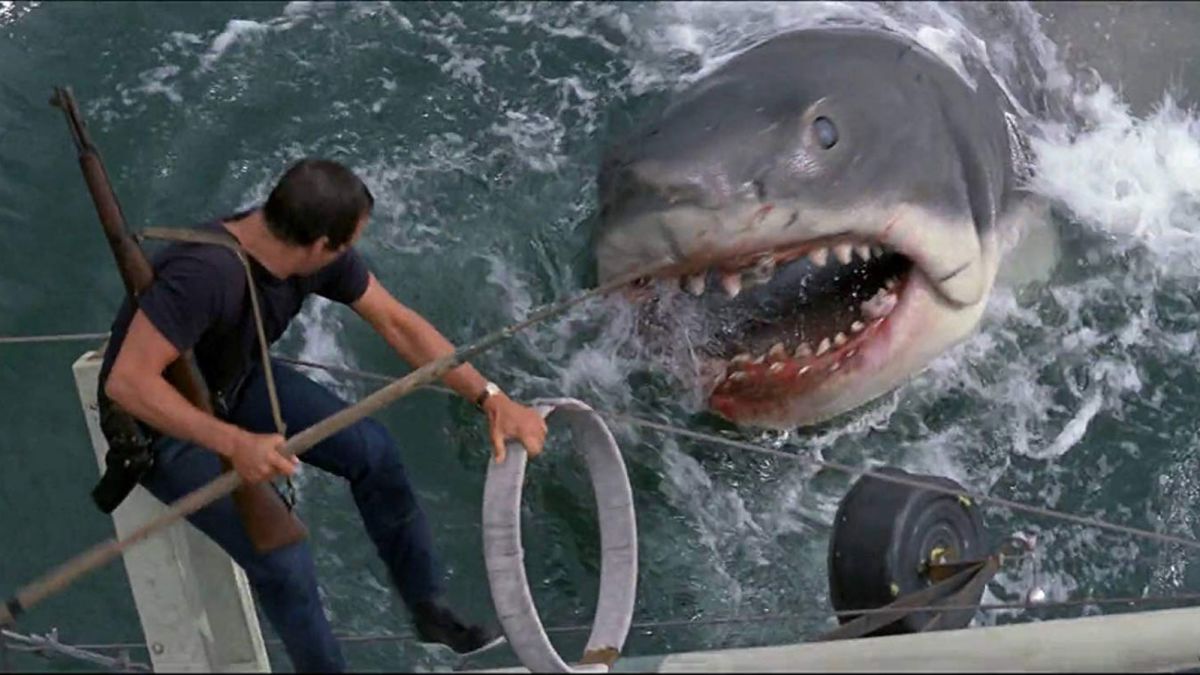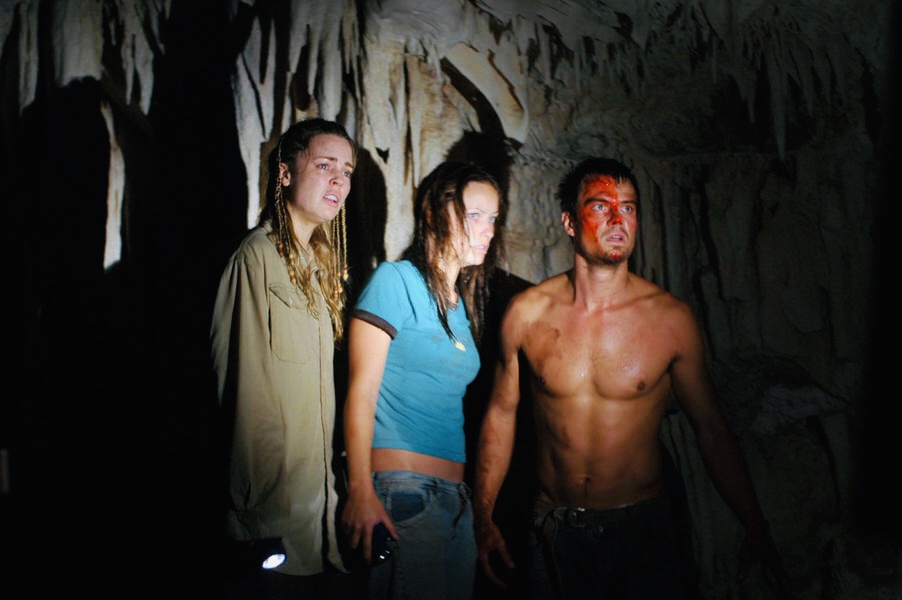Top Ten Video Nasties

Dead Northern picks its ‘Top Ten Video Nasties’, in celebration of our new monthly event ‘Nasty Video Club’!
10 – Tenebrae (Directed by Dario Argento, 1982)

Throughout Dario Argento’s lengthy career, he has become synonymous with the Giallo subgenre of horror cinema, known for its hyper-stylised, theatrical films that focused on the fantasticality of the narrative. Whilst the video nasties have become heavily linked to slashers, an era of cinema that many forget is heavily twinned with the nasties is Giallo. One of the must-see films within this confine is Tenebrae, a stunning yet dramatically horrific tale of deceit and betrayal. Surprisingly, Tenebrae remained on the list until 1999; however, unlike many of the list’s entries, Tenebrae still managed to gain quite a reputation despite its censorship in the UK.
What propels Tenebrae into the video nasties hall of fame is the film’s most bloody and glorious scene, featuring a sudden axe attack which shows the victim flail her bloody, axe-wounded arm across an entire sterile white-coloured kitchen, painting the walls with bright red. As with many Giallo films, Tenebrae is a pure feat for the eyes, basking in the glory of beautifully morbid visuals and creating scenes that stand the test of time.
9- Blood Feast (Directed by Herschell Gordon, 1963)
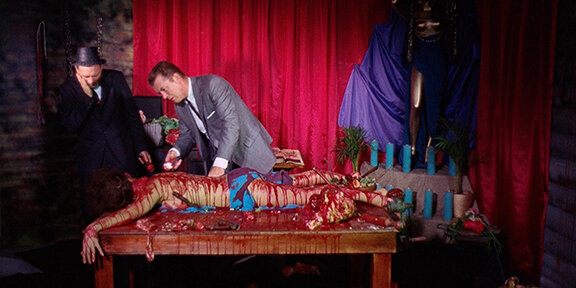
Blood Feast is the oldest film on the video nasties list and one of the most underrated entries. The Herschell Gordon directed film is a junior feat from the early days of the splatter era. It is known for its pure bloodshed and frenzied chaos that focuses on heavy gore and violence, with the film’s storyline coming second to the visuals. Blood Feast fleshes out a myriad of themes, from cannibalism and ceremonial feasts to a whodunit mystery showcasing authorities trying their darndest to work out who is the culprit causing all of the murderous madness.
Whilst many video nasties have gone on to become outstanding classics, with burgeoning reputations following in its wake, Blood Feast has yet to reach this acclaimed status. Many horror icons, including none other than Stephen King, have gone on to declare their disdain for this film, yet, there is something so moreish about this 1960s classic. Indeed, the performances are not entirely polished, nor is the dialogue anything outstanding. However, Blood Feast belongs to that homegrown, grassroots string of horror that gives credence to independent filmmaking.
8- The Driller Killer (Directed by Abel Ferrara, 1979)
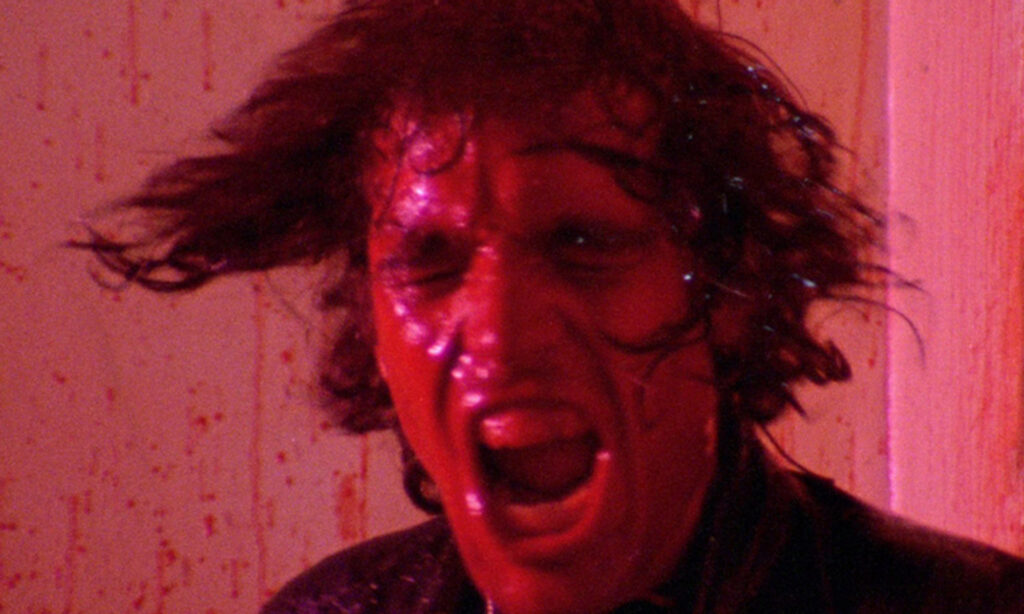
The Driller Killer screams ‘video nasties’. Everything about the film is entwined with what the nasty list epitomises; it has a catchy name, countless instances of violence, and is an all-around whale of a time. The film had one of the more severe punishments during the nasty reign, with the slasher not being reinstated until 2002 and belonging to the prosecuted section of the list.
However, the gore is so overtly over the top that any form of realism is entirely stripped, yet it is within this fantasticality that The Driller Killer shines. The flagrant score overpowers the dialogue at times, and the animated acting that thrives alongside the ludicrous character decisions propels the film into typical ‘nasty’ terrain where excessiveness trumps quality.
7- The Burning (Directed by Tony Maylam, 1981)
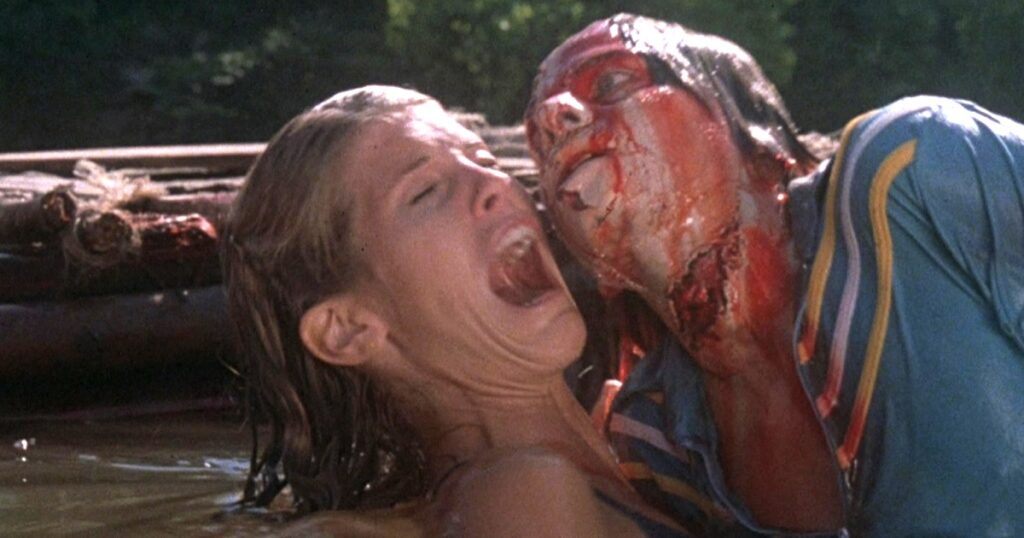
During the early 1980s, there was a massive boom in the horror market, with slashers, splatters, and gorefests rallying in the crowds and making financial waves in the process. Studios were desperate to capitalise on the success, with The Burning’s campsite premise eventually gaining interest. Upon its release, reviews were mixed, with horror still being a critically contentious subject. Despite The Burning not capturing critics’ attention, the film drew interest from the censorship board, which made excessive cuts for the cinema release. As the nasty epidemic grew, The Burning caused further outrage despite the public being openly allowed to watch it in theatres years prior. It was not until 2002 that audiences could watch The Burning in its full glory, with all of its murderous mayhem.
6- The Funhouse (Directed by Tobe Hooper, 1981)

Tobe Hooper is known for the one and only Texas Chainsaw Massacre (1974), the quintessential piece of horror history. However, The Funhouse still remains a criminally underrated diamond from his extensive filmography. The film is a terrifying circus of what happens when a carnival turns deadly, with the fairground antics collaborating with the multiple slayings, impalements, and electrocutions. Compared to its fellow comrades on the list, The Funhouse had an easy ride, obtaining a cinema release years prior and then being released uncut in 1987.
5- Dead & Buried (Directed by Gary Sherman, 1981)
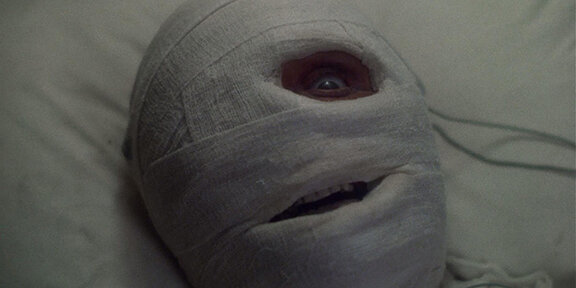
For a gruesome video nasty with an abundance of visceral gore and ghastly frights, Dead & Buried has an incredibly gripping story that keeps audiences on their toes with immense amounts of suspense and tension. The writing duo Dan O’Bannon and Ronald Shusett are at the hands of the grasping script. Amongst their credits are Return of the Living Dead (1985), Total Recall (1990), and the original story for Alien (1979). The film oozes relentless excitement, with each twist and turn complimenting the gnaly practical effects.
4- The Last House on the Left (Directed by Wes Craven, 1972)
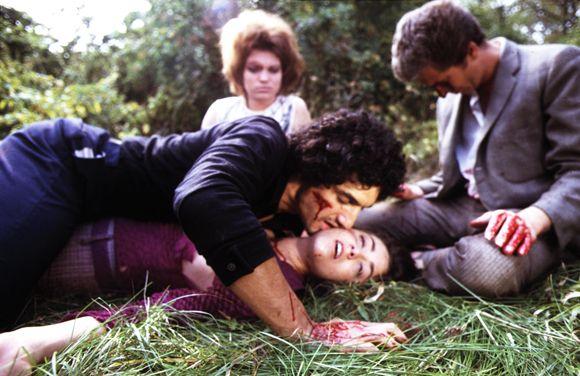
Prior to A Nightmare on Elm Street (1984) and Scream (1996), there was the utterly savage, brutal, and unforgettable The Last House on the Left. This 1970s classic based on Ingmar Bergman’s The Virgin Spring (1960) is a film that was deemed so barbaric that the BBFC did not release the full uncut version until 2008, not to mention the several post-nasties campaigns fighting against the release appeals made against the film for decades.
In decoding the film, there are a plethora of reasons raised as to why it remains just as disturbing now as it did decades ago, namely the realism that Craven applies to depict the horror. Despite the offbeat, out-of-place soundtrack and questionable acting, the events are beyond harrowing thanks to the unflinching camera that aims to show as much terror as humanly possible.
3- The Beyond (Directed by Lucio Fulci, 1981)

Another giallo classic to round off the list is The Beyond, a certified Lucio Fulci must-see. With The Beyond being the second entry in his ‘Gates of Hell’ trilogy (also including City of The Living Dead [1980] and The House by the Cemetary [1981]), its of no surprise that the film induces a blood-curdling, white-knuckled ride into delightful frights.
The Beyond’s contemporary cult reception is a warm welcome considering its contentious release, with the film not receiving an uncut release in the UK until 2001, as well as it not being available for public viewing until 1996 in the U.S.
2- Possession (Directed by Andrzej Żuławski, 1981)
Known as one of the most unhinged horror film’s from the eighties’ due to the infamous ‘tunnel scene’ is Possession, a European, graphic horror with an art-house flare that can only be described as eccentrically bizarre. Unlike many films that have a beginning, middle, end, rounded up with a solid conclusion, Possession ends with even more questions raised. To add to the narrative connundrem is the aforementioned tunnel escapade, which is a stunning exercise into how crucial performances can be in attaining affect. The film is definitely not for the faint of heart, eyes, or mind!
1- The Evil Dead (Directed by Sam Raimi, 1981)
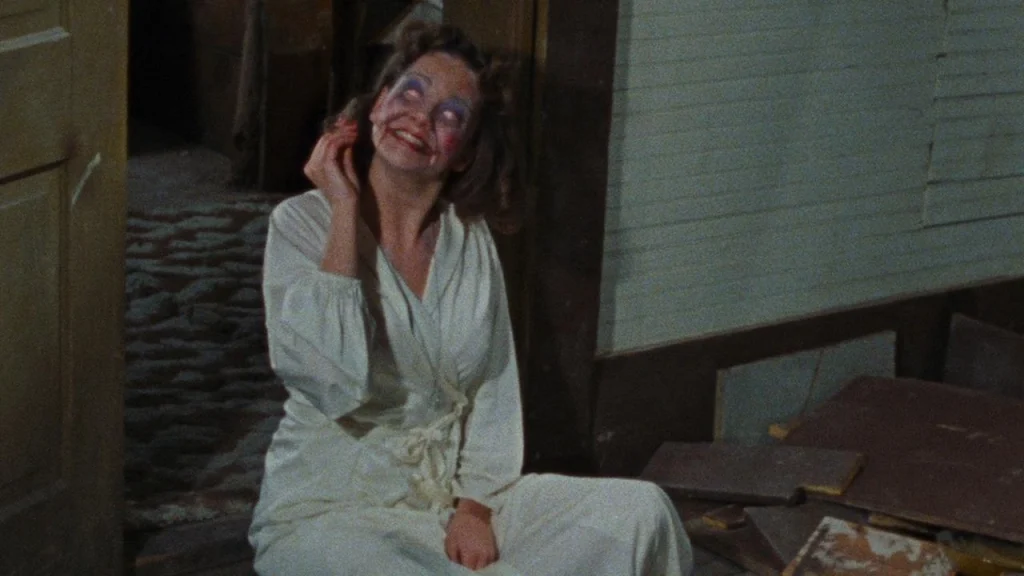
Considering The Evil Dead’s contemporary reception, it can be easily forgotten how controversial the film was at the time of its release. Raimi’s deadite adventures has not faltered at the hands of time whatsoever, with every inch of the film being just as entertaining now, if not more, than when it first hit the screens.
Everything, from the chilling dialogue sung and screamed by the evil creatures, the unforgettable tree sequence, the first word read from the Necronomicon, and Ash’s (Bruce Campbell) iconic catchphrases is an essential part of horror film history. If there was the ultimate entry from the video nasty list, The Evil Dead will always be crowned winner.
Want more top horror lists and reviews? Check out our blog here..

